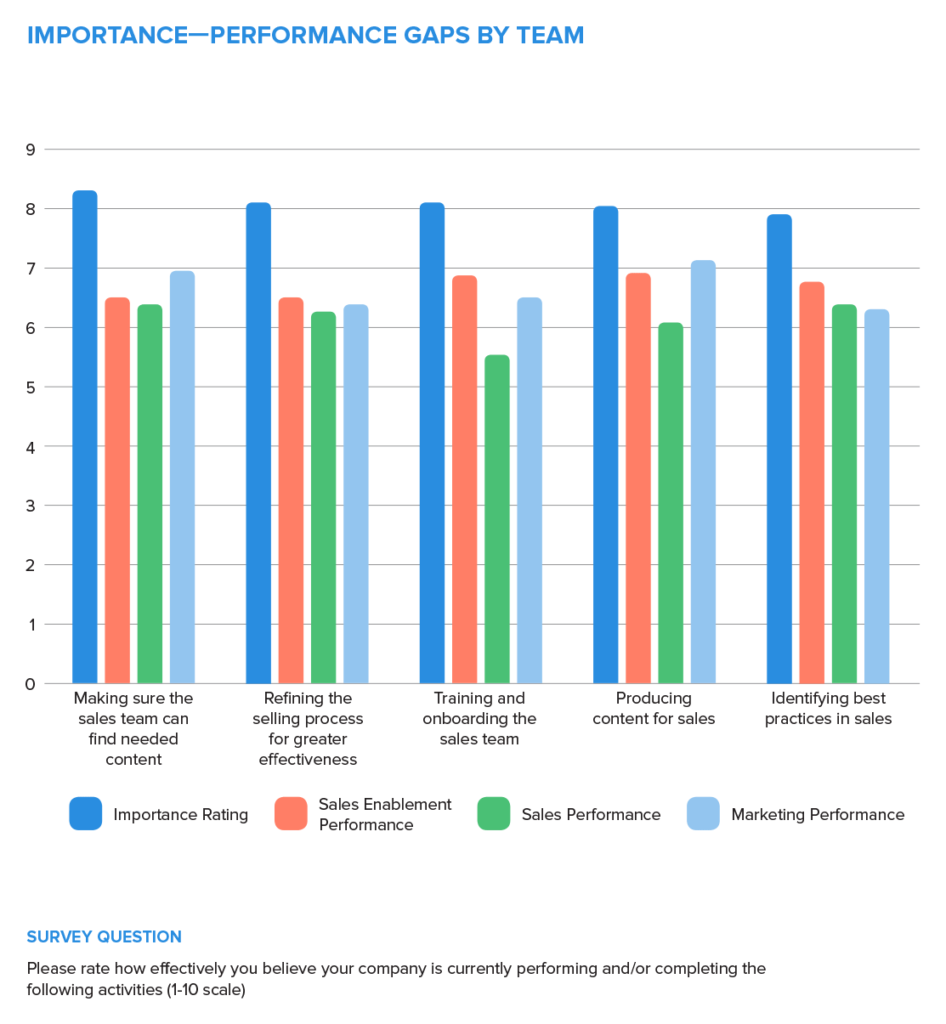Sales and marketing often hold different worldviews. Left unreconciled, they can flatten innovative ideas and the career-making opportunities that accompany them. Today we’re investing a few minutes in how to identify differences between perception and reality, and use the results as a launchpad for revenue growth.
The Other Side of the Lens
At one point or another, we’ve all perceived a sales and marketing reality that didn’t exist. We anticipated a behavior that fell short or an opportunity that didn’t materialize. In the final analysis, chances are you, too, vowed it would not happen again. This is about minimizing the probability it will.
A recent study by Highspot and Heinz Marketing captured the points of view of 586 marketing, sales, and sales enablement leaders. The purpose of the study was to learn more about how businesses are using sales enablement to drive sales performance. Among many notable results, differences in perception were among the most interesting. Here’s a snapshot of the importance and self-rated performance of respondents in five key activity areas:

As indicated above, importance-performance gaps vary by team and category. For example, marketers noted relatively small gaps in their ability to make sure the sales team can find needed content, as well as in producing content for sales (15% and 11%, respectively). On the sales side, relatively large gaps were noted in training and coaching the sales team (31%) and producing content for sales (the same category in which marketing perceives a small gap). Among sales enablement respondents, making sure the sales team can find needed content and refining the selling process for greater effectiveness emerged as significant gaps (22% and 20%, respectively).
Knowledge is Power
Though walking in the shoes of your colleagues might lack practical application, the spirit remains valid. Here are five recommendations for identifying content initiatives with the greatest impact on sales, marketing, and sales enablement teams:
- Know your colleagues’ KPIs. When you do, you’ll have clearer context on their incentives, top strategic priorities, the seasonality in their business, their approach toward specific audiences, and more. How? Simple: Ask them for their scorecards and share yours. (And repeat as necessary.) This is the first step toward testing your perceptions, regardless of which side of the lens you see.
- Know your colleagues’ pain points. Identify what they’d rather live without. From misguided content and lack of customer insights to technology overload and fragmented systems, there’s room for improvement in every execution plan. Find it, act on it, and reap the ROI. It all starts with candid conversations.
- Know which pain points can be solved with technology. Sales and marketing have been promised a solution for every ailment, often with underwhelming results. Fortunately, times have changed. Modern sales enablement technology is now capable of driving results that render predecessor versions irrelevant. A little research on the best of what’s currently available is a great place to start.
- Know what’s working. It’s not uncommon for solutions that work perfectly for marketing (or sales) to be either invisible or ineffective for sales (or marketing). If you value high-performing content made possible by a shared technology, language, scoreboard, and feedback loop, you’ll need a strategy for achieving it. And that strategy begins with (what else?) direct communication and informed analysis. The ball is in your court.
- Commit and measure. One-off meetings tend to be well-intentioned but lackluster in long-term impact. Sales and marketing leaders who have enacted real change have established a durable, recurring framework for exchanging data and ideas. We want this to be you. Monthly performance reviews of content strategy and execution, sales technology, and processes are a great starting point.
Hard Work + The Right Technology = Higher ROI
Armchair clairvoyance will never replace hard work and on-the-ground understanding. Many of the best sales and marketing pros have indoctrinated these essentials into their sales enablement routine. As proof, each day we hear from marketers using sales enablement to drive higher content ROI via improved content quality and relevance; and from salespeople who are now better prepared to demolish quota using the power of content. It’s a win-win if ever there was one.
To realign your own sales and marketing teams (and technologies), we recommend downloading a copy of State of Sales Enablement 2017. It might be just the silo-busting, revenue-generating, perception-versus-reality intelligence your business needs.




